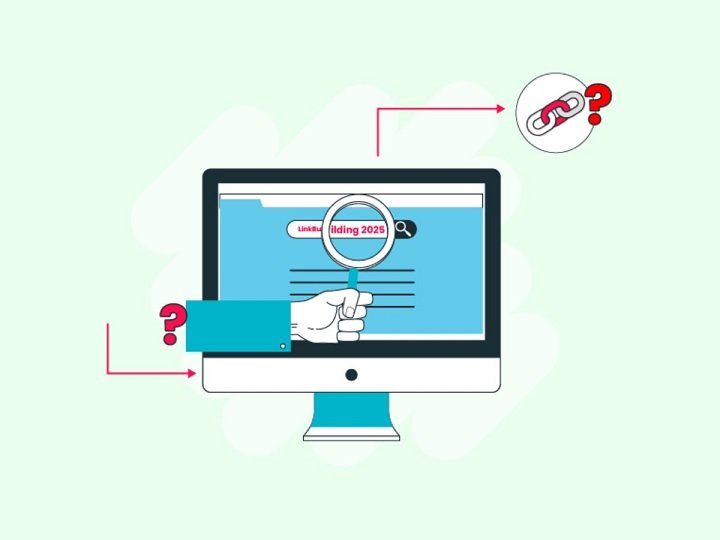
Crafting a Robust Link-Building Strategy for 2025
In the ever-evolving landscape of SEO, a robust link-building strategy can dramatically enhance your website’s authority, organic traffic, and long-term performance in search engine results. As digital competition intensifies in 2025, brands must take a proactive stance and adapt to shifting search engine guidelines and rising user expectations. While partnering with a seasoned provider of link building services can hasten your path to results, understanding the core principles behind link acquisition empowers you to construct a sustainable framework that withstands future changes. True link-building success is rooted in knowledge, intention, and ongoing refinement.
The contemporary approach to link-building centers less on the sheer volume of links acquired and more on fostering genuine, long-lasting digital authority. High-quality links are now the currency of trust online, serving as votes of confidence in your domain’s value and relevance. At the same time, the risks associated with poorly executed or manipulative link-building have never been higher, with frequent algorithm updates designed to root out and penalize such tactics. To rise above competitors, it is essential to focus your resources on strategies that foster genuine relationships, deliver substantial value, and safeguard your site’s reputation for the long term.
Understanding Link-Building
Link-building is the intentional process of obtaining hyperlinks from external websites to your digital assets and content. Every backlink your site earns serves as a public endorsement or ‘trust signal’ in the eyes of major search engines, such as Google. When a credible, industry-specific site links to one of your pages, this not only improves your ranking signals for relevant queries but also generates referral traffic from users genuinely interested in your niche. Unlike outdated tactics that relied on mass link acquisition, today’s environment demands strategic, thoughtful execution—one that harmonizes quality, link diversity, and strict adherence to ever-evolving Google guidelines. Adopting this big-picture perspective is key for any future-proof SEO campaign.
Understanding the nuances of link-building involves recognizing the different types of links (such as editorial, resource, and citation links) as well as their respective roles in an effective backlink portfolio. As search algorithms grow more sophisticated, your strategy must account not only for the origin and relevance of each link but also for the diversity of your link sources and the contexts in which your site is referenced. Successful link-building enhances every aspect of your online presence, from enhancing brand awareness among new audiences to establishing the authority required for top-tier keyword rankings.
Quality Over Quantity
In the current era of SEO, quality link-building is the gold standard. Search engines like Google are constantly refining their algorithms to filter out link spam and reward sites that possess contextually relevant, organic links from highly reputable sources. Chasing hundreds of low-value links—especially those originating from irrelevant, unrelated websites—can now be detrimental, as it not only fails to improve your search visibility but also potentially triggers manual or algorithmic penalties that lower your rankings. The hallmark of a successful 2025 strategy is to identify and target websites specifically related to your industry or subject matter, earning links by merit rather than manipulation.
The most valuable backlinks are editorially placed, meaning they are given based on the quality and relevance of your content rather than as a result of payment or obligation. These links serve as genuine endorsements and carry significantly more weight than those procured through shortcuts or scaled schemes. By focusing on securing links through credible media, top-tier industry blogs, and respected resource pages, you foster sustainable growth and reliability. Remember, a single backlink from a leading site in your field can drive more authority than dozens from obscure or spammy domains, making a quality-first mindset essential for long-term search success.
Content Creation: The Backbone of Link-Building
At the heart of modern link-building lies exceptional content creation. The most effective campaigns are powered by comprehensive, insightful resources such as detailed how-to guides, original research, or unique thought leadership articles. This kind of content not only garners attention in a crowded digital marketplace but also provides real value that naturally attracts links from publishers, influencers, and journalists. High-caliber content is fundamentally shareable and deserves to be cited, transforming your site into a reliable reference for industry peers.
To increase your chances of earning organic backlinks, commit to producing content that’s both original and actionable. Delve into problem-solving, supply rare data, and offer expert insights that are difficult to find elsewhere. Enhancing your work with multimedia, whether infographics, podcasts, or interactive calculators, can make it more engaging and appealing for others to reference. In doing so, you position your site not merely as another participant in your industry but as a definitive resource others rely on and link to—a critical step in future-proofing your link-building efforts.
Comprehensive Resources Win Links
Thorough, well-researched resources—such as “ultimate guides,” long-form case studies, or step-by-step instructional posts—are disproportionately referenced by other sites and consistently draw in organic backlinks. Investing effort into these cornerstone assets pays enduring dividends, as they become evergreen citation points for both established publishers and up-and-coming bloggers. According to leading SEO guides like Moz’s Beginner’s Guide to Link Building, the better your content, the easier it is to attract natural links over time.
Aim to synthesize data, opinions, and actionable steps into every resource. The more comprehensive and unique your content, the more likely others will recognize its value—and cite it in their own work.
Guest Blogging: Building Relationships and Links
Guest blogging is a tried-and-true method for earning links while simultaneously building industry relationships and broadening your audience reach. By developing insightful, fully original articles for respected publication partners, you tap into fresh communities and enhance your authority via contextual, editorially earned links. These backlinks, placed within high-value content hosted on trusted domains, signal your relevance and expertise to both search engines and readers.
Successful guest blogging hinges on collaboration and value exchange—mutually beneficial relationships that sometimes blossom into recurring partnerships. Begin with thorough research, identifying sites and publishers who authentically serve your target audience. Tailor your outreach by referencing their content, suggesting topics that meaningfully contribute to ongoing discussions, and ultimately supplying content that speaks directly to their community’s interests and needs. Over time, the right approach to guest blogging not only boosts your backlink profile but also propels your personal and brand credibility throughout your industry.
Best Practices for Outreach
Effective outreach is relationship-focused and highly personalized. Every email should address the recipient by name, reference specific articles or themes from their website, and clearly explain how your content will provide value. Propose well-thought-out topics that align closely with their audience—and always be professional, thanking the recipient for their time whether or not they accept your pitch.
Broken Link Building: Turning Challenges into Opportunities
Broken link building is a powerful, value-driven tactic that benefits both your site and the wider digital community. Website owners often struggle with outdated or dead resources, which can negatively impact their user experience and search rankings. By identifying these broken external links—particularly on domains relevant to your niche—and creating high-quality replacement content, you not only do the webmaster a favor but also secure a valuable, contextual backlink for your site.
This approach requires research and empathy. Tools are invaluable for scanning authoritative websites and identifying prime opportunities for broken links. With a helpful, respectful outreach message, you can alert the site owner to the issue and suggest your content as a suitable replacement. The win-win solution improves the external site’s value while enhancing your domain authority, making this an ethical and effective link-building strategy.
Tools and Tactics
Concentrate your broken link-building campaigns on resource pages, detailed blog posts, or relevant web directories that pertain to your industry. When reaching out, always communicate clearly—identify the specific broken link, suggest your updated resource, and show appreciation for the webmaster’s time. This approach builds goodwill and boosts the likelihood of your suggestion being accepted. Some of the most fruitful relationships and most powerful links are built by helping others maintain high standards for their digital properties.
Social Media: Amplifying Your Reach
In 2025, the power of social media in the scope of link-building cannot be understated, even though many links from these platforms are “nofollow.” Sites such as LinkedIn, Twitter, Facebook, and emerging social networks provide potent channels for distributing your best content, reaching new audiences, and driving engagement. Consistently sharing valuable resources on social media does far more than simply drive referral traffic—it significantly increases the likelihood that journalists, bloggers, and thought leaders will organically discover, mention, and ultimately link to your work.
Beyond link acquisition, a strong social media presence helps position you as an authority, foster brand engagement, and open doors to collaboration with influencers and industry experts. Such outreach often leads to natural backlinks that are more enduring and meaningful than those acquired via artificial means. In the modern SEO landscape, social sharing and diligent audience engagement are foundational pillars for any high-impact link-building campaign.
Monitoring and Adjusting Your Strategy
A data-driven approach is essential for any competitive link-building endeavor. Leverage advanced analytics tools such as Google Search Console, Moz, Majestic, or Ahrefs to regularly audit your backlink profile, track performance, and spot both new opportunities and potential risks. Closely monitor changes in link quality, referring domains, anchor text diversity, and overall site visibility. Evaluating your efforts in real time ensures you understand which tactics are working and where refinement is needed.
The SEO landscape is constantly evolving, with continuous updates to search engine guidelines and ranking signals. Stay alert to emerging trends, algorithm updates, and innovative link-building strategies to stay ahead of the curve. Agile adaptation—guided by a commitment to quality, transparency, and ethical tactics—allows you to successfully weather shifts in the digital ecosystem while continuously expanding your online reach and authority.
Conclusion
Link-building in 2025 is no longer about chasing shortcuts or sheer volume—it’s about building trust, relevance, and long-term authority in a rapidly evolving digital environment. By prioritizing quality over quantity, creating genuinely valuable content, leveraging outreach and guest blogging with purpose, and embracing ethical tactics like broken link building, brands can cultivate a resilient and impactful backlink profile. Integrating social media amplification and data-driven monitoring further strengthens your efforts, ensuring they remain aligned with shifting search engine expectations. Ultimately, the most successful link-building strategies are those grounded in authenticity, relationship-building, and a continuous commitment to delivering genuine value to both users and the broader web ecosystem.


